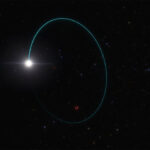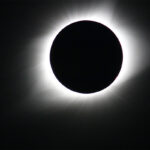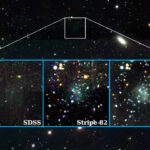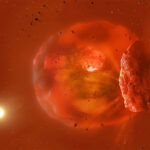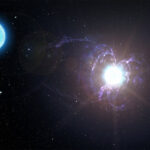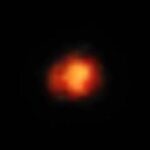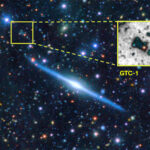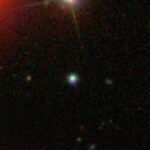Most massive stellar black hole in our galaxy found
Astronomers have identified the most massive stellar black hole yet discovered in the Milky Way galaxy. This black hole was spotted in data from the European Space Agency’s Gaia mission because it imposes an odd ‘wobbling’ motion on the companion star orbiting it. Data from the European Southern Observatory’s Very…
2024 Total Solar Eclipse: Through the Eyes of NASA
A view of the Aug. 21, 2017, total solar eclipse from Madras, Oregon. Credits: NASA/Gopalswamy. Today, April 8, 2024, a total solar eclipse will cross North America, passing over Mexico, the United States, and Canada. The first location in continental North America that will experience totality is Mexico’s Pacific coast…
Nube, the almost invisible galaxy which challenges the dark matter model
A group of astrophysicists led by Mireia Montes, a researcher at the Instituto de Astrofísica de Canarias (IAC), has discovered the largest and most diffuse galaxy recorded until now. The study has been published in the journal Astronomy & Astrophysics, and has used data taken with the Gran Telescopio Canarias…
Researchers capture first-ever afterglow of huge planetary collision in outer space
A chance social media post by an eagle-eyed amateur astronomer sparked the discovery of an explosive collision between two giant planets, which crashed into each other in a distant space system 1,800 light years away from planet Earth. Image shows a visualisation of the huge, glowing planetary body produced by…
Magnetars Origin Story
Far far away, in a constellation called Monoceros, 3000 light years away from us, lives an unusual star known as HD 45166 - preparing to become the most magnetic powerhouse to exist in the known Universe. Magnetars are a type of neutron star that holds the ‘universal’ record of the object with the…
The James Webb observes the first galaxies in the universe and discovers and “impostor”
An international study, carried out by the James Webb Space Telescope (JWST) in which the Instituto de Astrofísica de Canarias (IAC) has participated, shows that the universe could produce extremely luminous galaxies at very early epochs, when it was only some 3% of its present age. This result implies that…
Cosmic Monsters’ Growth Secret
The story of how black holes, especially young ones, grow so fast and become so massive, has been puzzling astronomers for a long time. Enter VERA! – the state-of-the-art Japanese network of radio telescopes operated by NAOJ that recently gifted astronomers with a significant clue to the puzzle. Jets ejected from a…
Grantecan solves an old puzzle about the brightness of galaxy discs
An international scientific team, including the Instituto de Astrofísica de Canarias (IAC), has detected distortions in the brightness of a galaxy's disc that could be explained by the gravitational effect of an unknown neighbouring galaxy. Named GTC-1, the satellite galaxy was discovered using ultra-deep images obtained with the OSIRIS camera of the…
Tracing Our Stellar Ancestors
A team of astronomers from Japan and China discovered a strange star floating at the edge of our Milky Way galaxy. On a closer look at the star’s chemistry, astronomers think they might have just uncovered a galactic treasure. Could this star be the stellar relative of one of the firstborn stars…
Stranger Things in a Stranger World
On a clear night sky, head out to the backyard with star charts or night sky apps and look up. Can you spot the constellation Pisces? Did you know there is a strange world in the direction of this constellation? Astronomers recently found evidence of stranger things happening on this…

